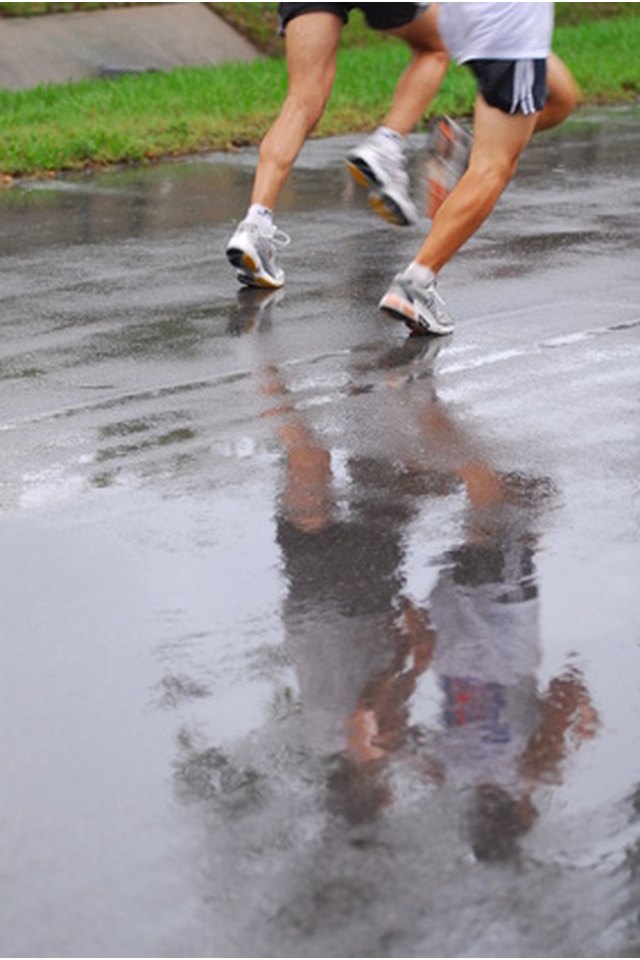How to Tape a Calf Muscle

Taping a calf muscle with athletic tape can prevent strain-related injury, but it can also ease the pain once the injury has occurred. The calf muscle can be taped to focus solely on the calf itself or as part of a larger unit of calf and Achilles tendon support. Depending on the nature of your injury, you can still engage in sports and fitness activities while wearing athletic tape. Many professional athletes wear athletic tape to support their commonly strained muscles during a game or match.
Rip off a piece of tape that extends the length of your half. Place it along the vertical length of your calf. It should extend from just under back of the knee all the way down to the area right above the Achilles tendon. Stretch the tape so it is pulled tight in the middle, but not stretched much at the ends.
Tear another piece of tape that extends the width of your calf muscle. Place the tape horizontally across the first piece of tape in the area of the calf muscle where you feel the most strain. Stretch the tape so it is pulled tight in the middle but not significantly stretched at the ends. This cross shape is a simple way to tape a strained calf muscle. Continue to Step 3 if you wish to add more tape to involve the Achilles tendon.
Add support for your Achilles tendon by incorporating it into the taping of the calf muscle. Rather than taping along the length of the calf muscle first, wrap tape around the calf at the place where you feel the most strain.
Holding the foot so it is completely flat and level, extend a strip of tape vertically from the horizontally wrapped tape, over the Achilles tendon, past the heel, and onto the bottom of the foot. Place two more strips of tape along each side the vertically placed strip of tape, both extended around the heel to the bottom of the foot.
Wrap a piece of tape horizontally around the Achilles tendon to add a final ring of support. This will also help hold down the vertical strips of tape.
Warnings
Do not rely on athletic tape to heal a severe calf injury. Check with your sports physician if you think your calf strain may need more serious treatment and/or therapy.
References
Writer Bio
Margaret Kay has worked as a freelance writer since 2009. She has worked as a contributor to "The Gonzaga Bulletin." Kay has recently completed her Master of Theology in media ethics at the University of Edinburgh.
